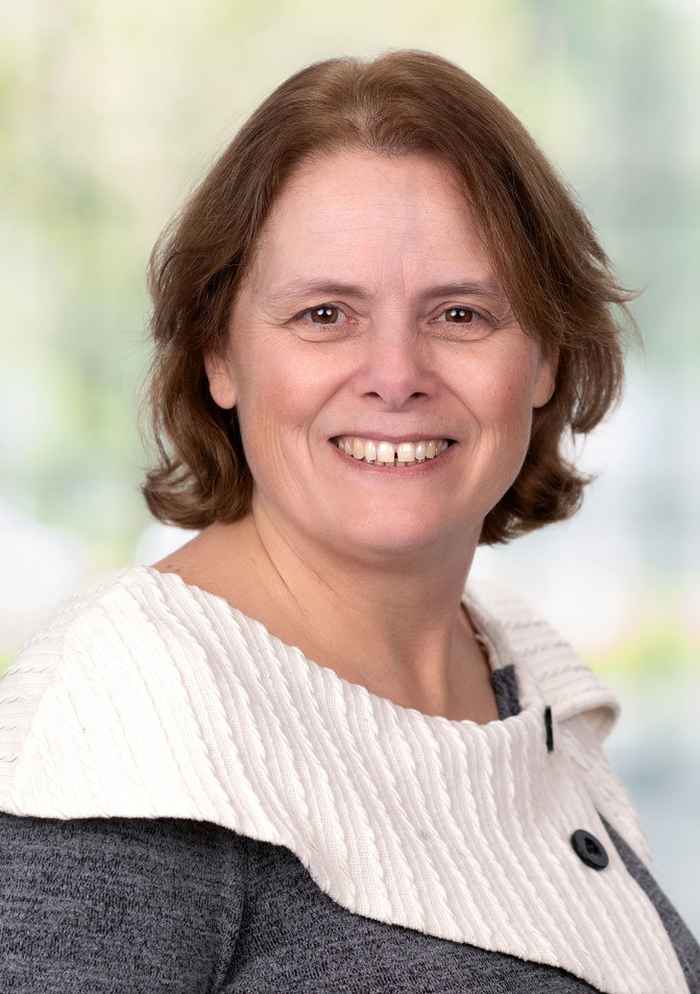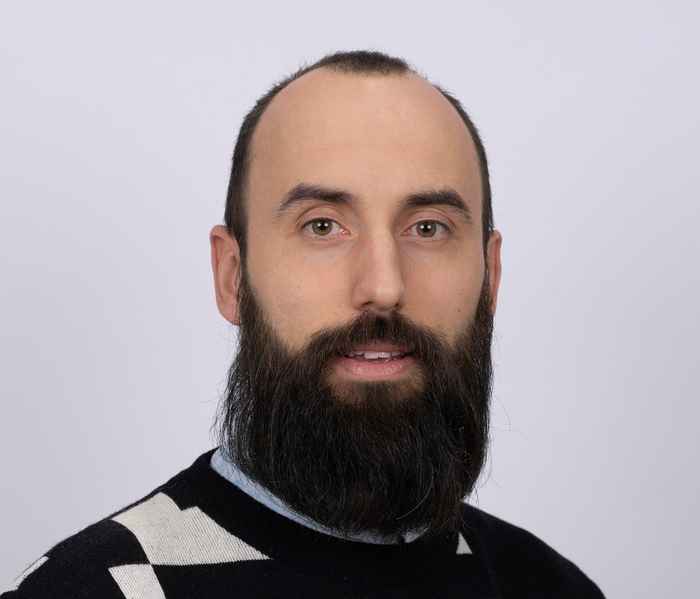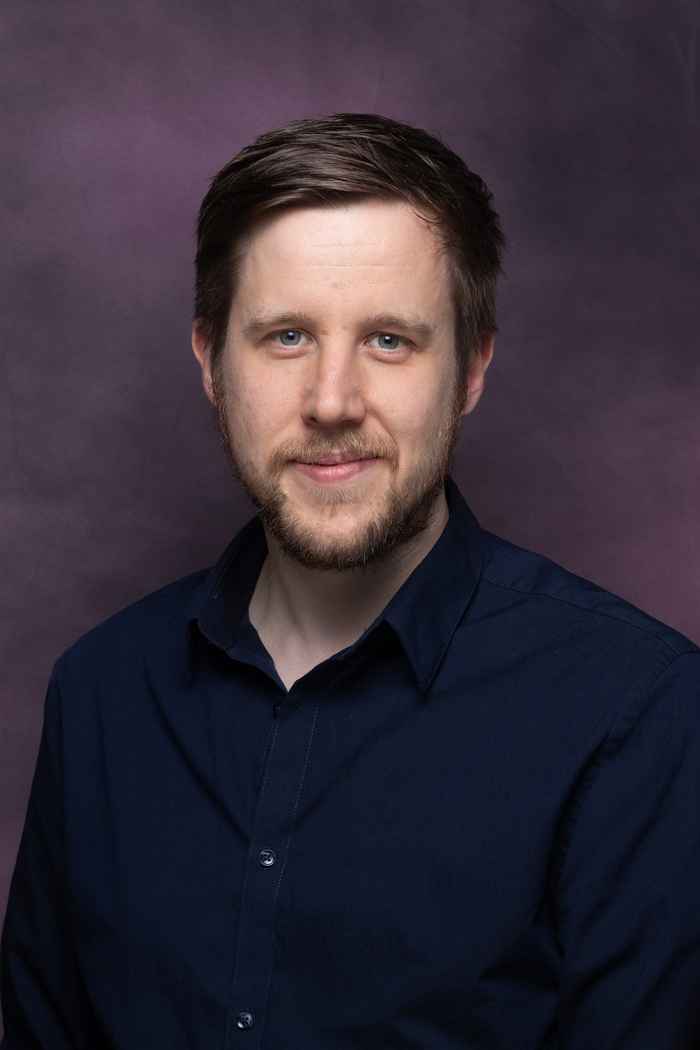Four scientists promoted to associate professor at the Van 't Hoff Institute for Molecular Sciences
25 April 2025
HIMS scientific director Prof. Bas de Bruin is excited that these talented staff members have been able to take the next step in their academic careers. ‘As an institute we are happy to strengthen as well as rejuvenate our senior staff with these valued scientists’, he adds.
Here we present short profiles of the four new associate professors in no particular order:

“I consider my appointment an acknowledgement of the power of curiosity-driven science and the importance of interdisciplinary thinking. It recognises what I’ve built so far and motivates me to keep exploring - in the lab, the classroom, and beyond. While I study life’s origins, I’ve also had to carve out my own. As a woman in science, each step forward has often meant navigating barriers that are still too often invisible. This moment reflects not just research achievements, but persistence. I’m proud to have reached this stage, and hopeful that visibility helps smooth the path for those who follow. There’s still work to be done for academia to truly recognise and support talent in all its forms.”
Dr Annemieke Petrignani leads innovative research from astrochemistry to the origins of life. She studies the signatures and evolution of complex hydrocarbon molecules under extraterrestrial conditions and investigates how these molecules may transition into building blocks of life in early planetary environments. Her research combines advanced laser (action) spectroscopy techniques, laboratory simulations of dynamic, mixed-phase planetary settings, and interdisciplinary collaboration.
Petrignani's work is embedded in national and international research networks, including PDRs4All (JWST) and the Dutch Origins Center. In addition to her research, she is deeply committed to education and outreach. Petrignani has played a key role in the development of several innovative teaching programs, including the Origins InterSpecial Minor and the bachelor Science, Technology, and Innovation. Her outreach efforts include the development of a new exhibition on prebiotic worlds at NEMO Science Museum.
Over the course of her career, Petrignani received experimental, observational, and educational grants. She was awarded an NWO Vidi in 2016 to research shapes and sizes of hydrocarbons in space, and the MacGillavry Fellowship in 2019 to expand her work into laboratory studies of prebiotic chemistry under early planetary conditions. She is director of the Amsterdam Center for Origins of Life (AMCOOL), co-PI in the NWO-PEPSci network, and board member and co-PI of the newly funded NWA-ORC consortium PRELIFE.

"This appointment is a significant recognition of our work, made possible by the dedicated students and colleagues who have collaborated with me over the years. I am excited to continue pushing the boundaries of LC-MS technology and explore its applications to characterize relationships between functions and structures of macromolecules, particularly in areas like endogenous protein analysis."
In his research, Dr Andrea Gargano focuses on developing cutting-edge LC-MS technology for the characterization of macromolecules. This includes innovative hyphenated separation approaches for intact protein analysis, methods for impurity profiling of oligonucleotides, enzymatic systems for characterizing synthetic polymers, and instrumental development of multidimensional separation techniques coupled with mass spectrometry.
Key career highlights for Dr Gargano include obtaining his PhD in Chemistry from the University of Vienna in 2013, receiving the Ernst-Bayer Award in 2014, and the Csaba Horváth Young-Scientist Award in 2015. He was also awarded an NWO-VENI research fellowship (2015) for his proposal on Intact-Protein Analysis (IPA) and was recognized as one of the 'Fab Forty' gifted young scientists in analytical science by The Analytical Scientist magazine in both 2018 and 2022.
Research group (jointly with Bob Pirok): Chemometrics and Advanced Separations.

“Over the past five years, I’ve had the privilege of working with incredibly talented students, collaborators, colleagues, and friends. Together, we’ve made groundbreaking progress in mapping the exposome chemical space, and we will continue advancing this work—one step at a time. This promotion is not only a recognition of my team’s efforts and dedication, but also brings much-needed attention to the emerging and exciting field of computational exposomics.”
Dr Saer Samanipour leads research at the intersection of computational mass spectrometry, cheminformatics, analytical chemistry and machine learning, i.e. computational exposomics. His work focuses on developing analytical and computational approaches to map the vast and largely unknown chemical exposome—the totality of environmental chemicals humans are exposed to throughout life. With his team he integrates non-targeted analysis (NTA) using high-resolution mass spectrometry, machine learning, and environmental modeling to identify and characterize thousands of unknown chemicals in complex environmental samples as well as building models to predict properties and activities of known and unknown chemicals.
Samanipour is part of multiple nationally and internationally funded projects. Recently has joined the editorial board of Nature Scientific Reports and Scientific Data. Moreover, he is a board member of Chemical Sensing and Enabling Technologies (CSET) of ChemistryNL with a focus on digital chemistry.
Research group: Environmental Modeling & Computational Mass Spectrometry.

“Having achieved my Bachelor and Master degree from the University of Amsterdam, I cherish the opportunity to contribute to further improving our education. Universities play a critical role in society and have a continuous responsibility to help solve problems that our society is facing. Our most essential task is to provide excellent education to our students. In the current political climate, this task has become more challenging, but not less important. As associate professor in analytical chemistry, I am convinced that we can maintain world-class education in close connection to our innovative research.”
Dr Bob Pirok focuses on improving the accessibility of analytical technology to society through education and research. For the latter, his team develops computational methods to advance method development and data analysis for high-resolution separations, with a special interest in multi-dimensional chromatography and fundamental separation science. This led to the development of the AutoLC algorithm for which his team was recently awarded the HTC Innovation Award in Leuven, Belgium. On the educational side, Pirok writes regular columns on topics concerning data analysis and is an author of Analytical Separation Science, an educational textbook on separations and data analysis.
Pirok is the writer of the NWO PARADISE project, and was awarded the NWO VENI personal research grant for his proposal entitled Unleashing Separation Technology to Achieve Innovation in Research and Society (UPSTAIRS), Pirok is also visiting professor at Gustavus Adolphus College (MN, USA) and is one of the coordinators of the MSc. Chemistry, analytical sciences track. Bob Pirok is also involved in the NWO KIC Innovator project, together with Andrea Gargano and Saer Samanipour.
Research group (jointly with Andrea Gargano): Chemometrics and Advanced Separations.